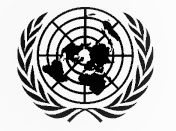26 January 2024 — United Nations Headquarters
On 26 January 2024, the UN Office for Disarmament Affairs and the Permanent Missions of Portugal, Costa Rica, and Cabo Verde to the United Nations held an event to reflect on the role of the United Nations in discussions on armed uncrewed aerial vehicles (UAVs, also referred to as armed drones). With the participation of experts and Member State representatives, the discussion raised awareness of developments in the field of armed UAVs, assessed their impact on international peace and security, and stimulated dialogue on identifying avenues to address the issue within the United Nations.

Her Excellency Ana Paula Zacarias, Permanent Representative of Portugal to the United Nations, and Mr. Adedeji Ebo, Director and Deputy to the High Representative for Disarmament Affairs, made opening remarks. This was followed by a panel discussion, with panelists including Ms. Sarah Grand-Clement of the United Nations Institute for Disarmament Research, Mr. Wim Zwijnenburg of PAX and Mr. Himayu Shiotani of Conflict Armament Research.
Developments in armed UAVs
Over the past decades, armed UAVs have changed warfare significantly. Armed UAVs have proliferated as the technology becomes accessible to a broader range of actors and the manufacturing and operating cost has decreased significantly. Today, they are in service with a broad cross-section of States and non-State actors.
The growing use of UAVs by both States and non-state actors in armed conflict places civilians and civilian infrastructure at risk, bringing to the fore questions around transparency, oversight, accountability, and the rule of law. Their extensive deployment in armed conflict, such as in the war in Ukraine by both parties to the conflict or in the Middle East, calls for increased attention to the existing and potential humanitarian, legal, security, ethical and technological concerns.
A significant development is the weaponization of low-cost, off-the-shelf commercial UAVs by non-state actors and their proliferation across conflict zones, democratizing their acquisition and blurring the line between military and civilian applications of UAVs. These systems can lower the threshold of the use of force given that their use poses little to no physical risk to their operators. This asymmetric potential for disruption and destruction makes UAVs appealing to States and non-state actors – overall, these developments can raise implications for the maintenance of international peace, security and stability.
Advancements in UAV technology are linked to developments in other technological areas, such as artificial intelligence and autonomy. However, certain technical limitations persist, including limitations to endurance or payload capacity. Advances in relevant enabling technologies, including sensors, artificial intelligence, and computing power, could alleviate some of the existing limitations.
There is a need for focused discussions on the topic to clarify terminology and concepts. For instance, the umbrella term “uncrewed aerial vehicle” covers a variety of systems, ranging from weaponized commercial UAVs to loitering munitions, small tactical military drones, and purpose-built military armed UAVs.
The diverse range of capabilities, actors, and contexts of use carries varying implications for international peace and security, including the protection of civilians and the obligation to comply with international humanitarian law.
Addressing the threat multilaterally
During their opening remarks, both the Permanent Representative of Portugal to the United Nations and ODA’s Director and Deputy to the High Representative for Disarmament Affairs noted that, despite the threat UAVs pose to international peace and security, there is currently no multilateral framework mandated for addressing their use within the United Nations. Throughout the event, experts put forward priority areas and recommendations to support the international community in meeting the challenge.
Mr. Afonso Lages of the Permanent Mission of Portugal to the United Nations introduced a joint statement produced by Cabo Verde, Costa Rica and Portugal, on increasing multilateral exchanges of views regarding armed UAVs. The joint statement is open for signature by other States until 23 February 2024.
Some speakers highlighted the need for a multilateral process, including through a UN General Assembly First Committee resolution, for Member States to agree on transparency, oversight, and accountability measures regarding the acquisition, weaponization, and deployment of UAVs and associated technologies by States and non-state armed groups. Such discussions could focus on strengthening norms to prevent the illicit acquisition and diversion of UAVs by non-state actors, enhancing national capacities to prevent direct attacks on critical infrastructure and vulnerable targets and agreeing on good and best practices such as intelligence and knowledge-sharing.
Discussions also touched on the importance of making better use of and, if needed, updating existing mechanisms – such as the UN Register of Conventional Arms. In addition, the need for States to clarify their views on the issue, including their national position on export control or practices involving deliberate targeting using UAVs, was highlighted. Finally, experts called on States to continue raising awareness on the issue and monitor evolutions in the area. Items requiring close consideration could include tracking technological advances underpinning means and methods of weaponization, as well as their convergence with other fast-paced fields such as artificial intelligence.
Next steps
The event was closed by Ms. Ana Ávila of the Permanent Mission of Costa Rica to the United Nations, who highlighted the increased interest in this topic that deserved further discussion at the United Nations and pointed to the joint statement as an important next step.

